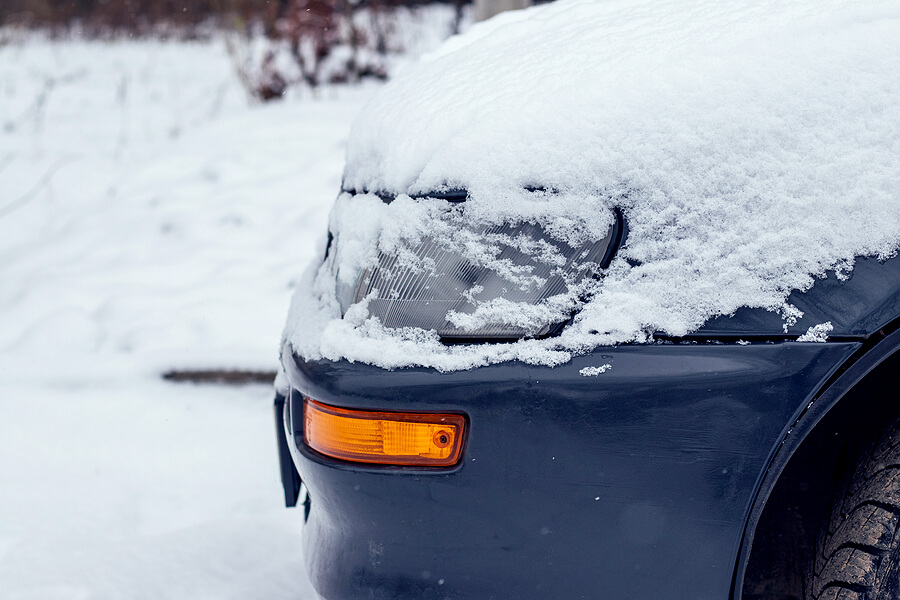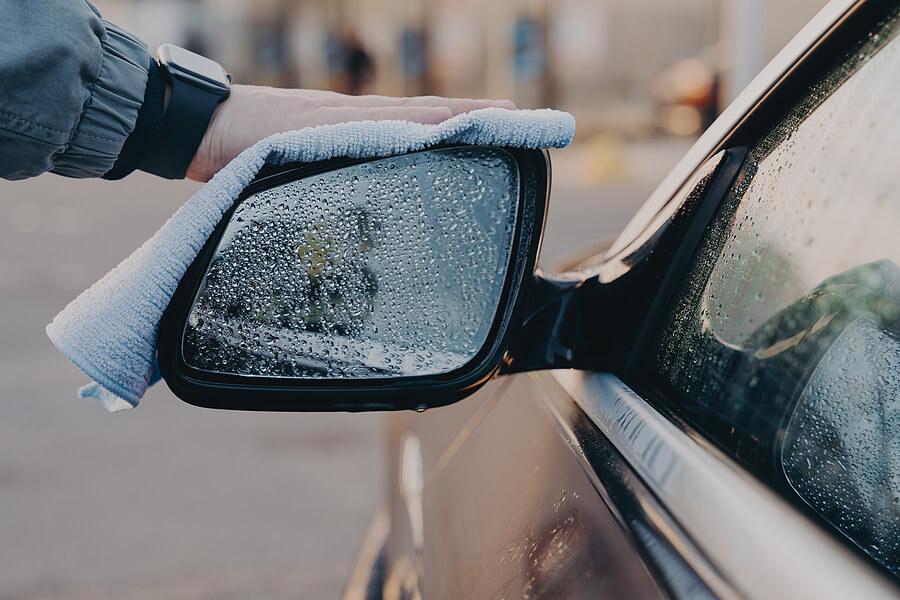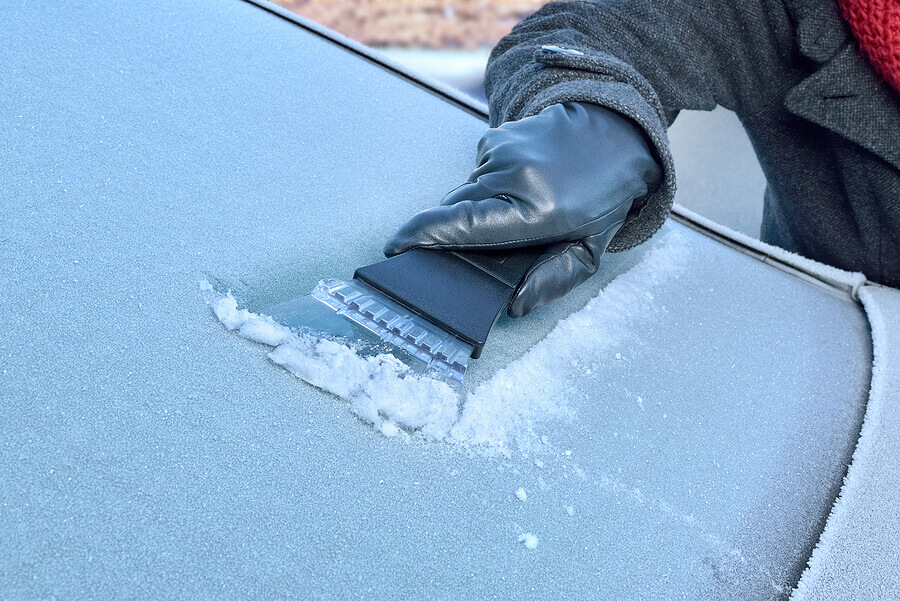As the season progresses and the temperature drops, you may start to find your car windows need a little attention before you head off to work in the morning.
In this blog post, we will delve into why one of the standard methods for defrosting a car window is terrible for the environment; offering some eco-friendlier alternatives for both the prevention of frost and defrosting once the ice has occurred.
Firstly though, let’s begin with the science.
Why does frost form on car windows?
In the daytime, there is moisture in the air.
Throughout the winter months, the temperature drops overnight, and this moisture freezes on surfaces such as car windows as the water condenses and evaporates.
You may be wondering why this frost forms on car windows and not on every item outdoors. Metal and glass cannot retain heat well, so these surfaces cool faster than others.
In fact, frost can form on a car window before the outside temperature drops below freezing; this is because a car window can be cooler than the air around it.
Why do you need to defrost your car windows?

The Highway Code states that you shouldn’t travel in icy or snowy weather unless your journey is essential.
However, if you do need to travel when there is ice or snow, Rule 229 of The Highway Code states:
- “you MUST be able to see, so clear all snow and ice from all your windows
- you MUST ensure that lights are clean and number plates are visible and legible
- make sure the mirrors are clear and the windows are demisted thoroughly
- remove all snow that might fall off into the path of other road users”
All of this means you need to consider more than just your windscreen when you’re getting your vehicle ready to set off on an icy day — or even a cool day when your car has frosted over.
If you drive without doing all of the above, you could end up with three penalty points on your driving licence and a fine due to the danger involved.
How to prevent frost from forming on car windows

A windshield cover is a purchasable option that prevents the formation of frost on your windscreen.
When you park up, you place the cover across your windscreen, and then you remove it in the morning to reveal a clear screen.
This works because it prevents moisture from settling on the windshield and no moisture equals no frost.
If you don’t want to spend any money or buy something specifically for this purpose, you can reuse an old towel, a piece of cardboard, a shower curtain or even an offcut of carpet to do the same job.
However, while this works well for your windscreen, you still have several other windows to worry about — all of which may have frosted up overnight.
A prevention option that can be used on all of your windows is the application of a homemade solution; three parts white vinegar to one part water, sprayed over your windows the night before you need to use your car.
This will help to prevent frost from forming but, if some does form, you can use the same solution in the morning to melt the ice quickly, cheaply and in a way that is kind to the environment.
A word of warning, though; avoid spraying the solution onto your car’s paintwork, as white vinegar is corrosive and, therefore, can cause unwanted damage.
A final ice prevention tip is to cover your wing mirrors with plastic bags overnight to prevent them from icing over.
How not to defrost car windows
It may appear to work quickly but don’t ever be tempted to pour boiling water over your car’s windows.
The sudden temperature change can cause windows to crack, and the boiling water can also cause damage to paintwork by melting the protective wax top layer.
One of the most common methods used to defrost a car quickly in the UK is de-icer spray. Unfortunately, de-icer is toxic, terrible for the environment, and fatal if ingested — even in small amounts — by humans or animals.
If you are keen to make positive changes for the environment, you’ll also want to avoid blasting your car heater at your windscreen and rear screen, as this involves running the engine when you’re not yet driving.
As the heater heats up best when the car is in motion, this can be a pointless exercise in any case.
Luckily, there are several earth-friendly alternatives that get the job done just as well and don’t involve the use of chemicals or running your car engine.
How to defrost car windows

So, we’ve tackled frost prevention and looked at how not to defrost your windows, so how should you be defrosting them?
Let’s take a look at how to defrost a car window without a heater and in an eco-friendly manner.
1. A car scraper
Sometimes the simple ways are the best, and you can’t get much simpler than a scraper for clearing your car windows and mirrors of frost and snow.
We’d love to suggest scraper alternatives here, such as an old CD case, but car scrapers are designed for this exact purpose, are cheap to buy, and will last you a lifetime — whereas other items could scratch your windows, causing you further problems.
2. A bag of rice
Microwave some uncooked rice in a heavy-duty zip-lock bag for 30 seconds, then sit in your car and slowly pass the warm bag across the inside of your windscreen and other windows.
This will slowly heat your windows up, melting ice and also preventing them from frosting up again while you drive.
The joy of this method is that you can reuse the same rice and bag every time you need to defrost your car.
3. A hot water bottle
Another reusable option is a hot water bottle filled with boiling water, diluted with a little cold water.
You may wish to experiment with how much hot water is safe on your windows by starting with it very diluted and adding a little less cold water to the mix each day.
As with the bag of rice, slowly move the hot water bottle across the inside of your windows while you’re sitting in the car.
A bonus of this method is, once your windows are defrosted, you’re left with a hot water bottle to keep yourself warm on your journey!
4. Saltwater
Mix a tablespoon of salt with two cups of water and spray over your windscreen to melt the ice.
Make sure to avoid spraying this mixture on your car’s paintwork though, as salt can build up over time and begin to eat into your paintwork, exposing the metal and causing rust.
Final thoughts
With simple preparation, you can easily prevent or at least reduce the occurrence of frost on your car windows.
However, frost can often catch drivers out overnight.
Luckily, there are four simple ways to defrost a car that don’t involve harsh, earth-unfriendly chemicals.
Try one of the above methods next time your windows freeze over; if one method doesn’t work well for you, another will.
